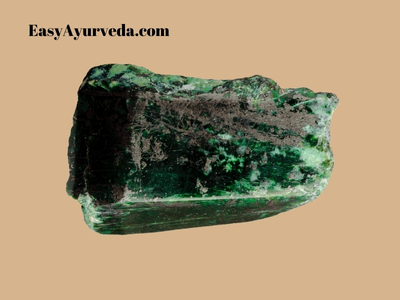Serpentine (Nagapashana) Properties, Shodhana, Marana, Dosage
Serpentine is called Nagapashan in Ayurveda. It is a hydrous silicate of Magnesium and is an important mineral used in Ayurvedic pharmaceuticals. It is a yellowish white stone which is shiny and light in nature.
Table of Contents
Introduction

Serpentine is called as Naga pashana in Ayurveda. It is a hridya dravya, i.e., cardiotonic. It is often used in the form of pishti (fine powder). It is magnesium iron silicate hydroxide.
Chemical formula – FeH8Mg3O8Si2
Synonyms of Nagapashana (Serpentine)
Nagapashana,
Nagashma,
Jaharmohara, Zaharmohra, Jaharmohra
Jawahar Mohra
Gunakarma of Nagapashan
Properties of Nagapasan
Snigdha – unctuous
Laghu – light
Rooksha – dry
Ushna – hot
Hridya – cardiotonic
Vishaghna – anti-toxic
Bhedya – laxative
It acts as –
Yakrit balakara – enhances liver strength,
Ojo vardhaka – increases Ojas,
Vishahara – anti-poisonous,
Medhya – increases brain power,
Hridya – cardiotonic
Useful in the treatment of –
Chardi – vomiting,
Balatisara – diarrhea in children,
Ajirna – indigestion, Visuchika – gastroenteritis,
Daha – burning sensation,
Jwara – fever etc.
Shodhana of nagapashanam
Nagapashana should be heated and dipped in milk for 20 times. By this procedure nagapashana gets purified.
Marana of Nagapashana
Powder of Nagapashana should be triturated with milk, chakrikas (discs) are prepared and sealed in sharava samputa. Then it should be subjected to one gajaputa heat.
Preparation of Pishti
Pishti preparation is prepared by triturating the fine powder of Nagapashana with rose water.
Dosage of Nagapasan
1 to 4 ratti (125 mg to 500 mg) in divided doses per day









2 comments
Jean Jacques Le Corre
Namasté,
Les cours dispensés dans votre école sont-ils traduits en Français !
Dr J V Hebbar MD(Ayu)Author
Sorry, not available.